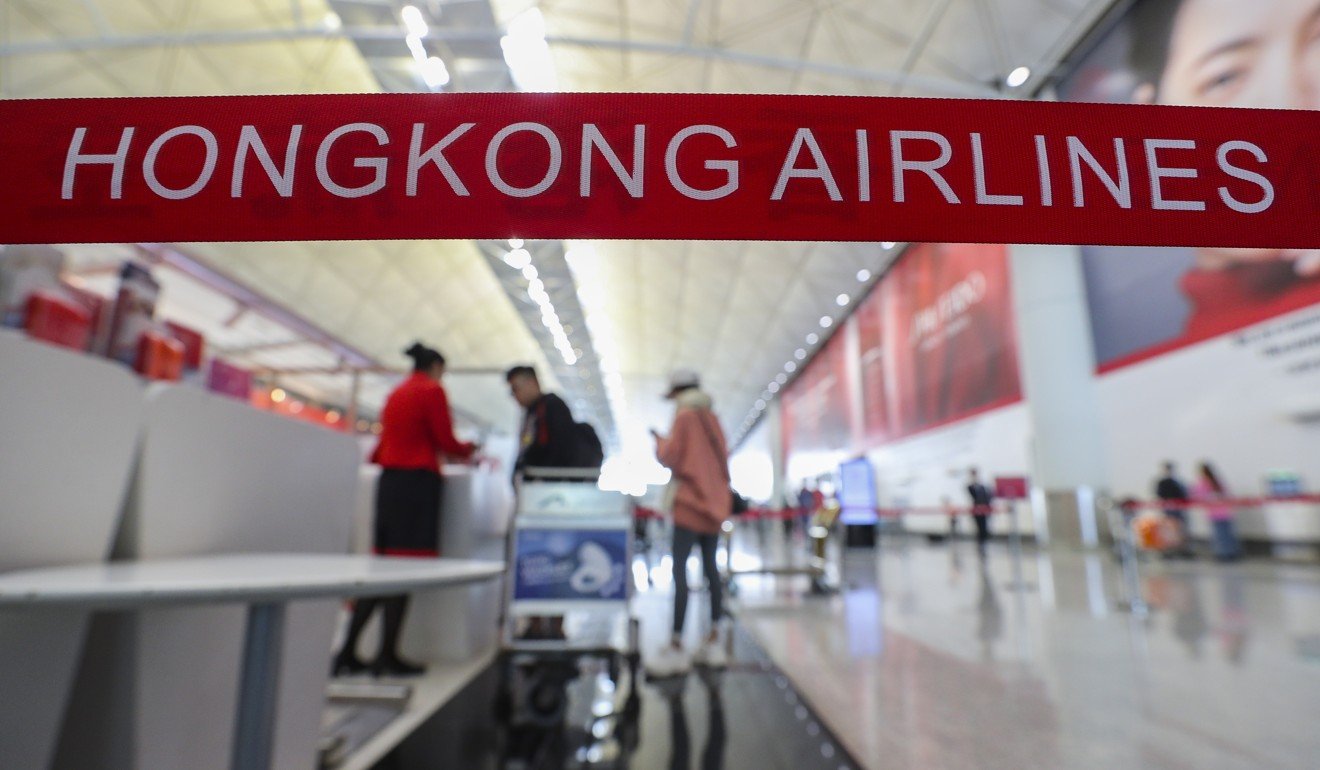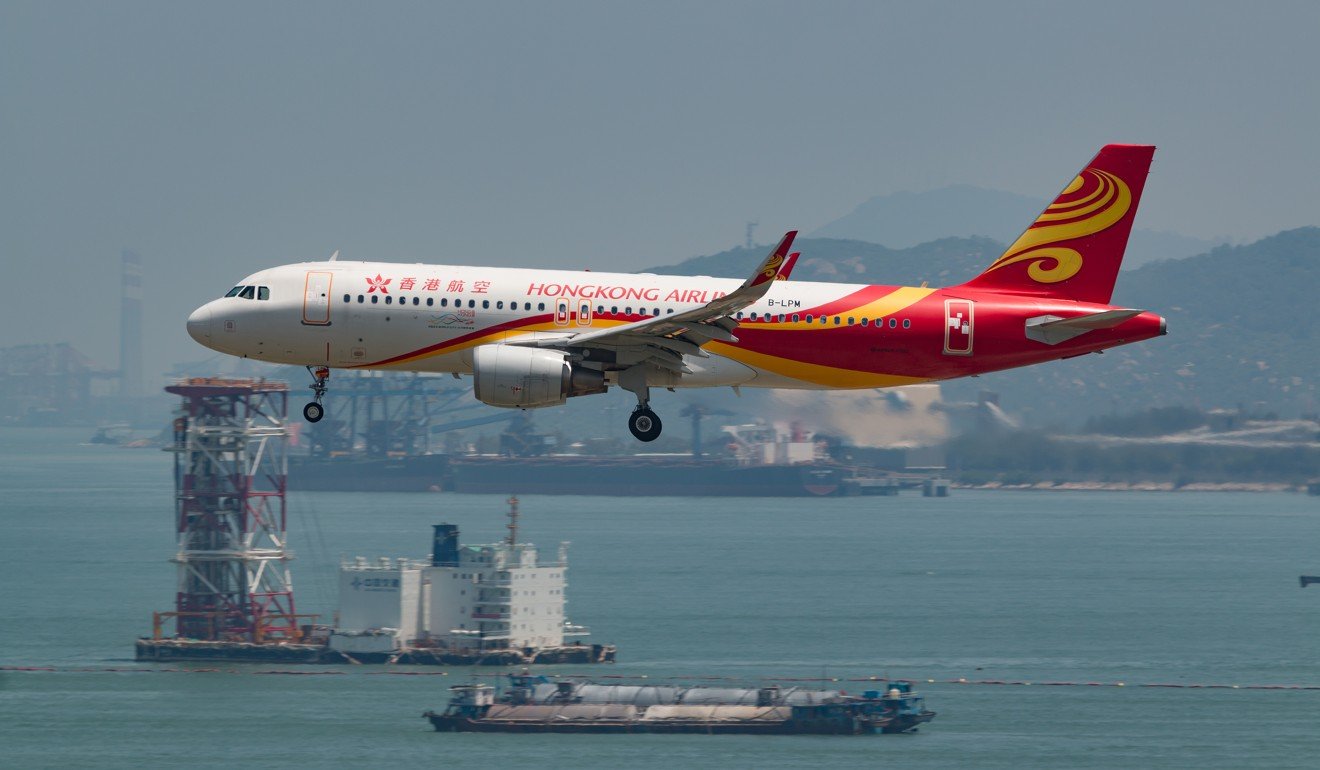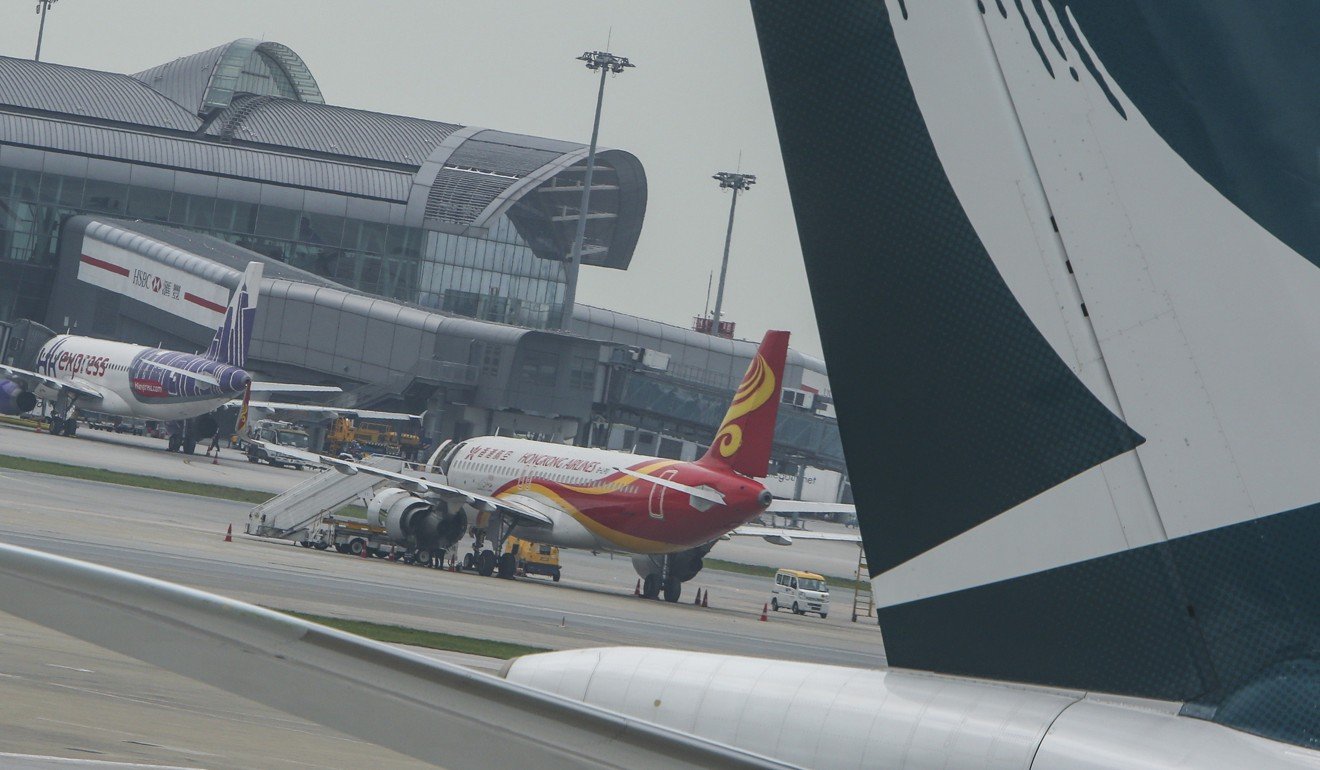
Exclusive | More than 100 employees have left troubled Hong Kong Airlines in past three months but carrier insists few departures were through compulsory job cuts
- Difference in staff levels is mainly because of resignations and natural attrition, a spokeswoman says
- City’s third biggest airline is reportedly seeking cash injection of HK$2 billion to ensure it keeps its licence
But few of the departures were down to compulsory job cuts, the company insisted.
“The difference is not retrenchment but mainly due to resignations and natural attrition,” a spokeswoman said.
The airline, part-owned by mainland China’s troubled HNA Group, is still flying despite facing lawsuits over unpaid debts and a management exodus, with authorities monitoring its ability to continue as a business.
A more pressing concern for the city’s third biggest airline is that it requires a cash injection of HK$2 billion (US$255 million) to satisfy the Hong Kong authorities it will not breach the financial conditions set out in its permit to fly.

According to a Reuters report on Friday, which cited sources who attended an extraordinary shareholder meeting last week, the company sought the cash to keep its licence issued by Hong Kong transport officials.
The struggling carrier says it is still recruiting staff despite the drop in manpower.
The total number of employees at the start of January was 3,903. By the start of April the number had fallen to 3,798, a net drop of 105 employees, according to figures reviewed by the Post. In that time, 143 workers left the company while 38 joined.
Licensing authority tells Hong Kong Airlines to hand in finance plan
Over the same period, cabin crew numbers fell by 70 to 1,856. Employees categorised as working at the airline’s headquarters fell by 52 to 742. There was little change in pilot numbers, despite the airline’s efforts to offload aircrew.
Bucking the trend was the company’s maintenance, repair and operations (MRO) unit, which saw employee numbers rise by 38 to 286. Airlines involved in the MRO business have managed to boost revenue and generate greater profits from third-party maintenance contracts.

“Hong Kong Airlines is still recruiting for various positions. We will continue to manage our workforce based on business needs,” the company spokeswoman said.
The airline was showing 69 job opening for a variety of functions ranging from engineering, finance and IT to positions for business analysts.
Hong Kong Airlines lost HK$3 billion last year, according to Reuters. The report also said the carrier made a profit of HK$759 million in 2017, but sources close to the airline questioned the profitability, adding that the company also made a loss in 2016.
Cathay has cut costs and 600 jobs in Hong Kong to return to financial health.
Hong Kong Airlines’ troubles started over concerns it could not repay a US$550 million bond. As doubts over its finances emerged, several executives, including its chief financial officer, quit.

The carrier has also had to deal with several lawsuits over unpaid debts to investors, banks and aircraft leasing companies in recent months. A travel insurer in January withdrew protection in the event the airline collapsed.
Routes, particularly long-haul ones, have been cut to stem losses and the number of planes the airline flies has also been trimmed.
Hong Kong Airlines ‘consolidating’ amid growing doubts about its finances
Hong Kong’s airline licensing authority – a statutory body with the power to shut down carriers and approve new ones – has publicly chastised the company, repeatedly demanding clarity over its finances. By March 15, the Air Transport Licensing Authority said the carrier needed to produce “a concrete plan” to improve its books.
HNA, the indebted airlines-to-financial services conglomerate, is in the midst of unwinding a US$50 billion binge on foreign spending in recent years.
Cathay Pacific successfully bid for HK Express, a budget carrier backed by a complex web of HNA parties, in a HK$4.98 billion deal last month.

Timeline
December 11 It is disclosed for the first time that Hong Kong Airlines vice-chairman Tang King-shing has abruptly resigned from company. Chief financial officer Jacky Lui Jaqui has left unexpectedly. Between July 20 and November 23, seven top-level managers or company directors leave the airline.
December 21 Hong Kong’s Air Transport Licensing Authority says for the first time it is “following up” on the airline’s much publicised financial position over repaying a large loan.
December 31 “Hong Kong Airlines Consultation Service”, which shares the same business address as its namesake airline, is sued by HNA for HK$850 million. Airline denies any links.
January 3 Insurer Blue Cross (Asia-Pacific) alters future insurance policies, removing customer compensation of HK$2,000 in the event Hong Kong Airlines going bust.
January 5 Hong Kong Airlines threatens to sue anyone making “untrue and groundless speculations” that the company could go bankrupt.
January 9 The Post reports that the government is considering drawing up contingency measures in case the airline collapses during the Lunar New Year holiday.
January 14 Hong Kong’s airline licensing body, unsatisfied with initial explanations, issues a second public statement seeking follow-up questions and clarification over the company’s finances.
January 20 A deadline to repay a US$550 million loan passes without incident. Hong Kong Airlines receives a loan to repay the loan from HNA’s biggest creditor China Development Bank.
January 31 Macau lender Luso International Banking sues the airline over failure to repay a HK$157 million loan.
February 13 Airline axes long-haul flights to Auckland and withdraws from New Zealand, amid growing strain of competition and mounting financial pressure.
February 25 Aercap’s IFLC and Wilmington Trust sue airline for HK$150 million over the late payment of eight aircraft it is renting.
February 27 Hong Kong’s Air Licensing Transport Authority expresses “grave concerns” about the airline’s finances.
March 2 Airline said to have cut the number of aircraft it flies by a quarter to help ease financial woes.

